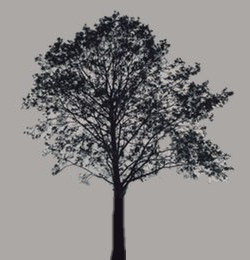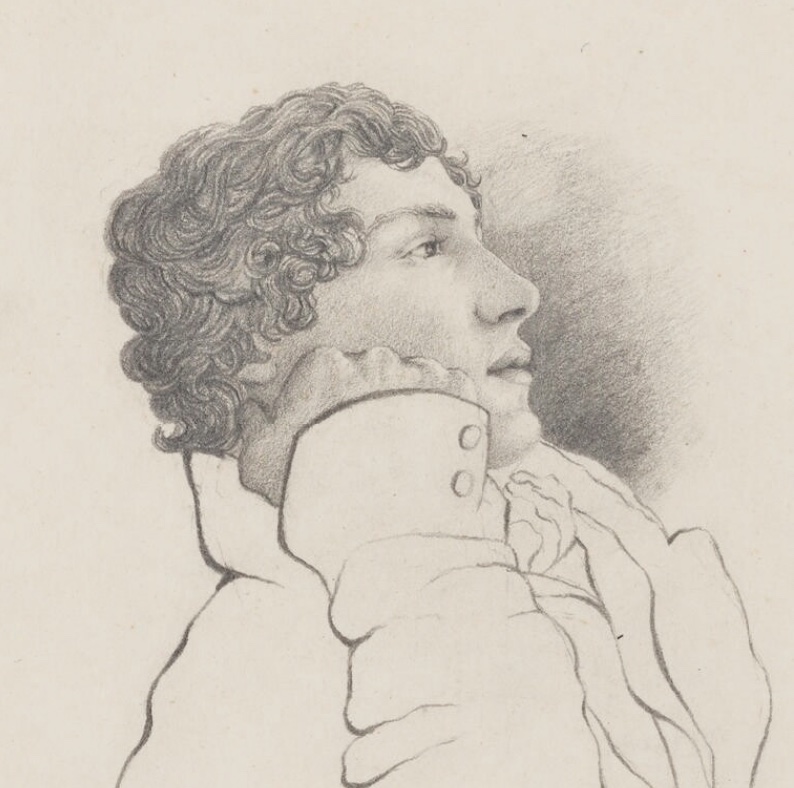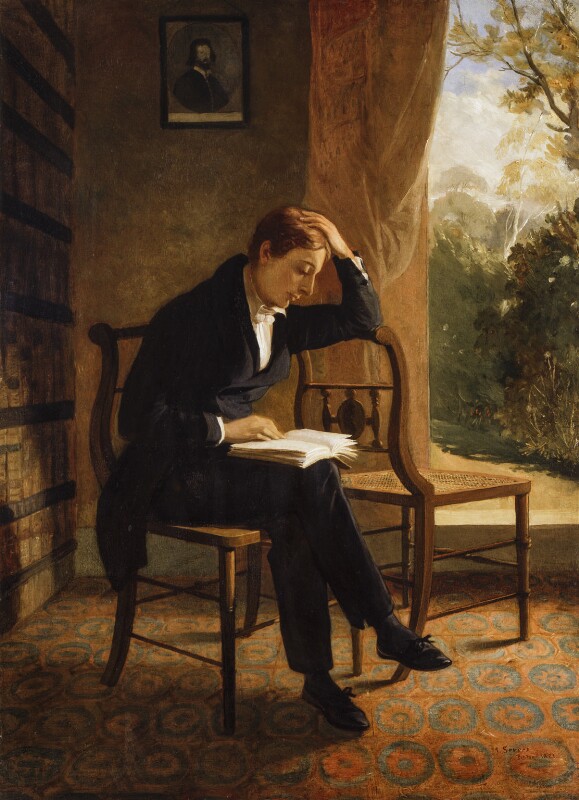
MKP has three conjoined purposes.
The first: To map some of Keats’s life in London, and then a bit further, to other places the young poet travelled to and through. Marking a Keats-related place or street address on a map is the rather simple objective, though digging up reliable addresses from two centuries ago and then locating them does, at times, involve a little detective work, especially given the rapidly changing suburban landscape of Greater London up to and during the Regency era—during the 19th century, London was on its way to becoming the largest city in the world. One realization: maps can, alas, be wrong—as can addresses or even the names of streets. And no doubt some of the markers on the 160 or so maps on this site are wrong, too.
This goal of finding and noting places on a map is, however, in itself both limited
and
limiting. In the case of Keats, how much does it matter if a place on a map indicates
that, for
example, here at 76 Cheapside Keats lives for short while, or that here at 41 Great Marlborough Street he breakfasts?
Is it such a big deal to represent via map placements something that we hardly have
to
prove—that, as Michael Dirda puts it, Keats is a Londoner through and through.
[1]
Moreover, Keats’s life extends beyond London, to places like the Isle
of Wight , Margate, Teignmouth,
Oxford, Winchester—not to mention
all kinds of excursions, including a depleting six-week walking tour through northwest England and into Scotland with very close friend Charles Brown. Then there’s Rome, where Keats sinks to an agonizing end, aged twenty-five. But, admittedly, there
is
a pleasure in gazing upon maps, and that can be an end in itself: like a god, we can
survey
those tiny, neat, and intricate names and lines and spaces that represent the larger,
messier
world. Ah, the feeling of order and control—of literal oversight.
Of course lurking more behind the where
of Keats is the what
of Keats, as in what
was he doing when he was at such-and-such a place.


The second inducement for the project—its theory, in effect: To re-imagine
the critical book. That is, MKP attempts to re-imagine the
form and potential of an academic genre whose origins rest in the idea of a printed,
traditional
monograph. The mapping
metaphor now takes up not just the idea of putting a mark upon a
map, but the more involved and important idea of associating and connecting elements
in Keats’s
poetic progress in ways that a three-dimensional book cannot quite do. The site’s
recursive
structure of progressive reduplication (between multiple, overlapping micro-chapters)
acknowledges and attempts to embrace the fact that the dominant means to access information—via
the technology you have in front of you right now—changes the way we find, look at,
and engage
such information. That is, guided by what a search engine happens to turn up, we often
click in
and then click out with ruthless abandon—and often enough not quite knowing exactly
where we’ve
been and what else is there.
The third and most important purpose: To account for Keats’s remarkable poetic development, mainly between 1815-1819. This, of course, is a more interesting and engaging objective than plotting Keats’s mappable whereabouts—and it has driven much profitable work on Keats. Jonathan Bate articulates this in a question:
When, and under the influence of what shaping forces, did he [Keats] become a great
poet? Any literary biographer who can answer those two questions will have achieved
the holy
grail of Life-writing.
[2]
The intriguing and complicated problem, then, is what Keats does to develop as a poet
during
the period of living at 76 Cheapside, or
what influence those friends he dines with at 48 Mortimer Street have on his poetic
progress.
Relative to his poetic aspirations and poetic character, who does he talk and write
to? Who does he meet—and how? What does he read and purposefully
study? What do his friends read? What takes up most of this thinking? What, for example,
impacts
him on his walking expedition through Wordsworth and Burns territory, and how
does this, if at all, work itself into his poetic development? What impact does the
landscape—both natural and cultural—have on him? How do his poetics (mainly articulated
in his
letters) anticipate, or even propel, his poetry? When and how does he become Bate’s
great
poet
?
These kinds of questions and considerations guide much of this site’s purpose: To consider possible key moments in and the critical qualities of Keats’s poetic progress, those four or so years of poetic development; to suggest the relationships between his good, bad, and indifferent poetry (much of it is indeed indifferent); to probe the complex, intertwined factors that lead to that great work; to develop some original readings of Keats’s work.


Now, MKP does not pretend to have achieved Bate’s holy
grail,
but it does make some specific suggestions and offer theories about those
shaping forces,
while, almost as a prompting side-effect, also providing a kind of
geo-spacial biography of Keats. That is, if a reader decides to go through all 159
entries
(micro-chapters, I call them), that reader would, I hope, have a considered sense
of both
Keats’s life and, more importantly, his developing life as a poet. In short, and as
mentioned,
mapping places and sometimes picturing them is one aspect of the site, but this becomes
the
excuse and then backdrop for presenting a critical narrative of Keats’s poetic development.
I
can suggest some of the key factors or moments—shaping forces
—that contribute to Keats’s
startling poetic progress (these factors are discussed more fully on
the conclusions page:
~ his constant practice in the writing of poetry, beginning about 1814, and possibly earlier;
~ his very deliberate study of poetry, art, and drama (his reading), starting in earnest over 1815 into 1816, but set off by the early literary tutelage of Charles Cowden Clarke and his education at Clarke’s Academy;
~ his development of a complex and increasingly original poetics that guides and, interestingly, anticipates his progress—he knows what he wants to do before he does it or can do it; correspondingly, he comes to learn that intimations of future doubts and uncertainties can (as subjects) be poetically enacted as capable strengths rather than as restricting weaknesses—he masters the poetry of risk;
~ his discovery of what kind of poetry he does not want to write is as important as figuring out what kind of poetry he hopes to write; here Keats’s critical study of and critical determinations about Milton, Wordsworth, Hunt, Shakespeare, and Robert Burns are key;
~ his respected place within and connections to a particular intellectual and social network, and to a generally progressive literary scene, with a group of highly supportive friends, with Leigh Hunt as a crucial hub in this network, beginning late 1816; here, friends like Benjamin Robert Haydon, John Hamilton Reynolds, John Taylor, and Charles Brown come to mind. [See here for a graph of Keats’s network, which at a glance tells Keats’s whole story.]
~ his purposeful movement away from and then against the sway of Leigh Hunt’s poetic influence;
~ his short but valuable visit with Benjamin Bailey at Oxford over September into October 1817; Bailey’s theological conceptualizing importantly challenges and begins to force Keats’s thinking about the imagination as a form of knowing, and beauty as a deep form of truth [see 3 September 1817 and 28 November 1817];
~ in preparing Endymion for publication in early 1818, Keats importantly (but also obviously and openly) recognizes it is the haphazard work of an immature poet, and that it is time to move forward in a different way [see 7 March 1818];
~ coming to terms with the agonizing death of his younger brother, Tom, in December 1818 profoundly deepens his thinking and feeling about mortality in the face of death and suffering, and this shapes his thinking about the greater role of poetry, both within and beyond his own life;
~ not long after Tom passes away, Keats begins what evolves into a very long journal letter (14 February to 3 May 1819) to his remaining younger brother, George, and his George’s wife, Georgiana, which provides some of the background and, importantly, the momentum for the astonishing leap his poetry makes in spring 1819;
~ the fact that Keats does not have to work while he pursues his poetic career, made possible by family funds, however uncertain this support at times was;
~ and finally, of course, there is what might be called the Junkets factor: Keats’s complicated, unique, and ultimately unknowable capacities—his innate creative and imaginative potential, his unlearned emotional and intellectual nature, and his profound (uncanny?) ability to fuse novel relationship with both inductive thinking and discerning feeling.
These, then, are some of the factors and moments—compounding and overlapping—that underwrite and work into Keats’s remarkable poetic development. This is, of course, not the full story, but more like the never-ending story.
In the end, this site represents yet one more exploration of Keats’s greatness. For me, something fairly simple singles Keats out: he is too much one of us by reminding us of what we forget, that the world, that life, is beautiful, sorrowful, and mysterious, and that the mind is, at once, capable of beholding these truths. No wonder, then, that we keep coming back to him.
[on pages vii-ix of the original text]
KNOWING within myself the manner in which this Poem has been produced, it is not without a feeling of regret that I make it public.
What manner I mean, will be quite clear to the reader, who must soon perceive great inexperience, immaturity, and every error denoting a feverish attempt, rather than a deed accomplished. The two first books, and indeed the two last, I feel sensible are not of such completion as to warrant their passing the press; nor should they if I thought a year’s castigation would do them any good;—it will not: the foundations are too sandy. It is just that this youngster should die away: a sad thought for me, if I had not some hope that while it is dwindling I may be plotting, and fitting myself for verses fit to live.
This may be speaking too presumptuously, and may deserve a punishment: but no feeling man will be forward to inflict it: he will leave me alone, with the conviction that there is not fiercer hell than the failure in a great object. This is not written with the least atom of purpose to forestall criticisms of course, but from the desire I have to conciliate men who are competent to look, and who do look with a zealous eye, to the honour of English literature.
The imagination of a boy is healthy, and the mature imagination of a man is healthy; but there is a space of life between, in which the soul is in a ferment, the character undecided, the way of life uncertain, the ambition thick-sighted: thence proceeds mawkishness, and all the thousand bitters which those men I speak of must necessarily taste in going over the following pages.
I hope I have not in too late a day touched the beautiful mythology of Greece and dulled its brightness: for I wish to try once more, before I bid it farewel [sic].
Teignmouth,
April 10, 1818.
× Cite this page:
Blank, G. Kim. “Mapping Keats’s Progress & the Holy Grail.” Mapping Keats’s Progress: A Critical Chronology. Edition 3.27 , University of Victoria, 19 August 2024. https://johnkeats.uvic.ca/mkpHolyGrail.html.
G. Kim Blank, “Mapping Keats’s Progress & the Holy Grail,” Mapping Keats’s Progress: A Critical Chronology, Edition 3.27 , last modified 19th August 2024. https://johnkeats.uvic.ca/mkpHolyGrail.html.
Blank, G. Kim. “Mapping Keats’s Progress & the Holy Grail.” Mapping Keats’s Progress: A Critical Chronology, Edition 3.27 , last modified 19th August 2024. https://johnkeats.uvic.ca/mkpHolyGrail.html.